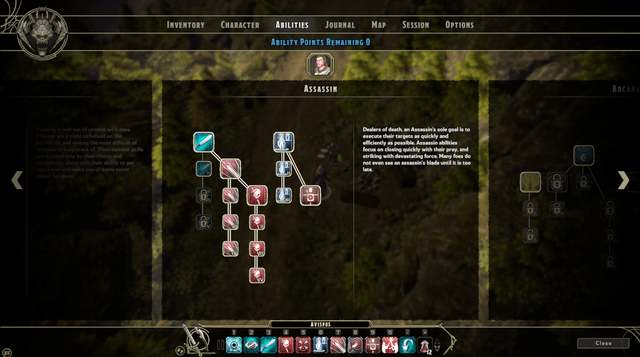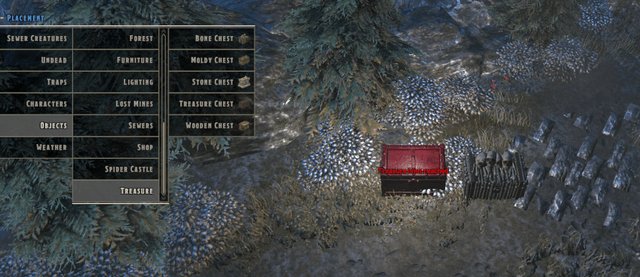Just when I thought Dungeons and Dragons was going to finally get another good game, n-Space’s Sword Coast Legends manages to dash my hopes spectacularly by churning out nothing more than another nail in the coffin for a digital version of the world’s most popular roleplaying game.
Let’s be clear: I’m a fiend for RPGs, so I’ve been waiting for this game for a long time. I’ve been following trailers and listening to interviews, and it was clear to me that this was a day-one buy.
What a mistake.
From combat caught between a legacy of strategic, pause-based planning and kick-down-the-door Diablo-styled gameplay to an overhyped multiplayer mode that turned out to be laughably linear, Sword Coast Legends manages to disappoint on almost every level.
Let’s break this game down, shall we?
The Mechanics
Behind every great RPG, there is a great system. Players build their characters from the ground up, creating unique playstyles that will carry you (or, if you make something truly awful, drag you kicking and screaming) through the game. I think Sword Coast Legends had the potential to make an enjoyable system, but it falls flat in so many ways.
Each character class is given a surprising number of talent trees. My assassin here had eight to choose from. However, you must build broadly, not specifically, as these trees are extremely shallow, hosting no more than four to five abilities each, along with a number of “rank ups” to click through that are essentially mandatory if you want a particular ability to stay relevant at later levels.
This might have been rectified with the inclusion of big, splashy abilities near the end of the trees that do something unique. RPGs are known for having exciting endgame abilities that make you feel a sense of progression when it comes to how far your character has come. In this game? Not so much. Abilities and passives amplify your damage or improve your ability to prevent damage, but never in particularly exciting ways.
Combat
A potion-chugging, player-reviving slugfest, and not in the good way. Player abilities are not rooted in a resource-based system, but rather, cooldowns. Part of this means that, out of combat, you can just wait for the cleric’s (very short) cooldown to come to an end so you can heal up before entering the next fight. Of course, this isn’t entirely bad. Divinity: Original Sin, for example, uses cooldown-based combat. However, in Divinity, fights are challenging on an encounter-by-encounter basis, and they expect you to be fully healed, otherwise the odds are terribly stacked against you.
In Sword Coast, the challenge just isn’t there, especially when you can have your characters down a metric ton of potions before any fight to buff them up to ludicrous levels, allowing you to out-muscle your enemies with ease. If that isn’t enough, you can easily get hold of dozens of healing potions, using one after the next, Diablo-style, whenever your character gets low.
The most awkward thing about the combat in Sword Coast Legends is that it doesn’t seem to know what it wants to be. The fact that you can pause and give your allies commands seems like an afterthought, as the game feels much more reminiscent of Diablo 2, sans the satisfactory hack-and-slash style the game is known for. So, the game has elements of both, but the enjoyable aspects of neither.
The Campaign
Nothing to write home about, but nothing terrible, either. The campaign starts with your typical fantasy plot of dark portents and adventurers setting out on a dangerous quest. You aren’t going to get attached to the party members along the way, but the game is chock-full of combat and little choices in each quest (even if those decisions really just affect the amount of gold you’re going to get). Secret doors and hoards of treasure abound help to emulate a classic Dungeons and Dragons experience, but that does nothing to redeem the paper-thin story and shoddy combat.
I won’t call the game a cakewalk. It has some hard moments, but “hard” in this game feels more like a fluke. I would sometimes send my party in, get destroyed in moments, reload, and then decide to blow potions, an easily-accessible and rapidly-expendable resource, rendering the previously-challenging fight a cakewalk.
Maybe if there were consequences to players falling unconscious (all you have to do is have another character move over to that character and spend a few seconds to “stabilize” and return the unconscious character to the fight), or if there were any sense of danger or engagement with the characters and story, but the game is, essentially, weightless.
In spite of these issues, I did find the experience somewhat enjoyable. Accruing experience points and gold, finding secret doors and collecting treasure, these are par for the course in this genre, and in that respect, Sword Coast Legends does not disappoint. However, it also fails to bring anything new to the table. And rather than reveling in these tropes, it seems content to play them all straight, something that can feel a bit outdated for a game that came out after Divinity: Original Sin and Pillars of Eternity, both games recognizable within the genre but also intent on carving out their own niche.
Yet, for all of this, I think the game might have been forgivable if it had delivered on the one thing that really had people intrigued:
Multiplayer
This is where the game might have set itself apart. After all, player-created content can often open the game up in unexpected ways. The game touts its “Dungeon Master” mode as one of its core features, the intent being to create your own adventures, complete with dungeons and cities. In fact, the player can take on the role of Dungeon Master for up to four players online, summoning enemies, controlling their courses of action, and generally being an all-around nuisance for the players to deal with during their foray.
Of course, the execution itself is laughable for myriad reasons.
1. You can’t make dungeons, only generate them.
Choose a tileset, the kinds of monsters that are going to appear, the size and complexity, and it’s done. You can furnish the rooms and fill them with more monsters if you want, but there’s no real choice involved in the layout itself.
2. Premade locations.
Similarly to how you cannot actually create your own layout for dungeons, you can’t actually create a layout for a city, a forest, or anything. You have to generate, and for locations, this might have been forgivable if everything wasn’t, essentially, a copy-paste of areas from the main campaign.
3. Treasure limits.
This is part of a much larger issue with Sword Coast Legends. See, the game has an interesting idea for how characters should work. Particularly, that they should be plug-n’-playable across any adventure. You can pop in on someone hosting the main campaign and play your part, and you can join player-created adventures too. This creates an interesting sort of MMO-ish environment, and gives you persistent characters to get attached to.
Of course, this also means the game doesn’t want you to get too powerful through magic items and the accumulation of wealth – even by the end of the main campaign, your gear isn’t particularly exciting.
The quest for more powerful and interesting items has been a staple in the RPG genre since, well, the advent of Dungeons and Dragons itself. But the game is afraid to give you anything amazing because of the multiplayer system, because your character might end up “too strong” compared to other characters of a similar level.
The saddest way the game limits this is by putting a hard cap on the amount of treasure a Dungeon Master can place per area. You can have three treasure chests on a map. No, you can’t have more. No, you don’t get to choose what’s in the chest. Worse, those chests are often throttled in terms of item quality, offering a pittance of gold and maybe a weak magic item.
Not only does this show that DM mode isn’t trying in the slightest to simulate the true idea behind Dungeon Mastering, but it also shows that the game is afraid to actually hand over the reins.
Dungeon Delving
Again, another fun concept ruined by the mechanics of the game itself, there is another mode, in which the Dungeon Master can play a part in beating down on adventurers by summoning monsters and taking control of them, but the mode seems to be about the same when run with players alone.
The game puts together a random dungeon for you and up to three other players to run through. In it, you will slaughter everything in your way. Of course, the game’s combat seems to break down significantly at later levels, which is unfortunate, since this is clearly something to do post-campaign.
Every time I joined a dungeon delve, I found I could easily just run off on my own and dispatch an entire pack of monsters, meant for a four-player-party, by myself, destroying any illusion of a team dynamic as we murdered everything in our paths. Sometimes we ate damage from a random trap or two, but we easily remedied that by chugging potions.
This goes back to my problems with the combat, which somehow become magnified when you have four real players at the helm: there’s no real impact. If a player goes down, you click on that player and bring him back up. He chugs a potion, heals to full, and is back into the fray. If people are low, you can wait for a few seconds and get back to max health. If you spring a trap, the consequence is, again, chugging a potion, as the radius and damage of each trap will never be enough to warrant wasting time searching for them.
In Conclusion…
I feel inclined to give this game a five out of ten, but there’s something underneath Sword Coast Legends that makes me hesitate. There’s potential here, even if the game is afraid to embrace it. While it would take more than a few hurdles and workarounds to make this game feel like a true finished product, if Dungeon Master mode is salvaged, I could see myself coming back to the game and enjoying myself.
We live in an era where, unfortunately, the released version of a game is rarely the finished product, and while I think Sword Coast Legends is a damning testament to this, I can hope that n-Space is making an effort to salvage what could have been a fantastic RPG.
Until then, we’re stuck with a game that is in the middle of an identity crisis between being a clunky Diablo clone or crudely designed tactical RPG.
6/10













Published: Oct 28, 2015 11:07 am